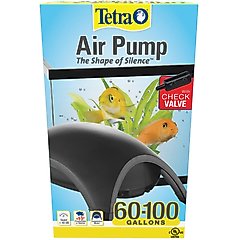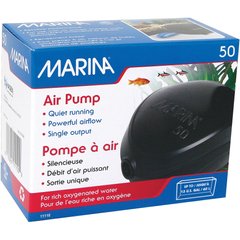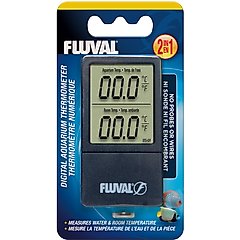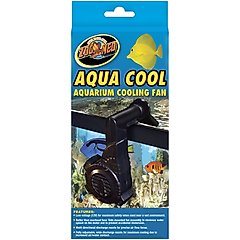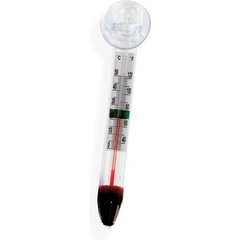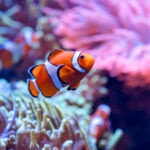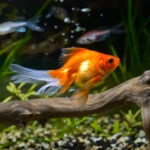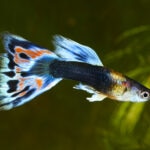How To Keep a Fish Tank Cool
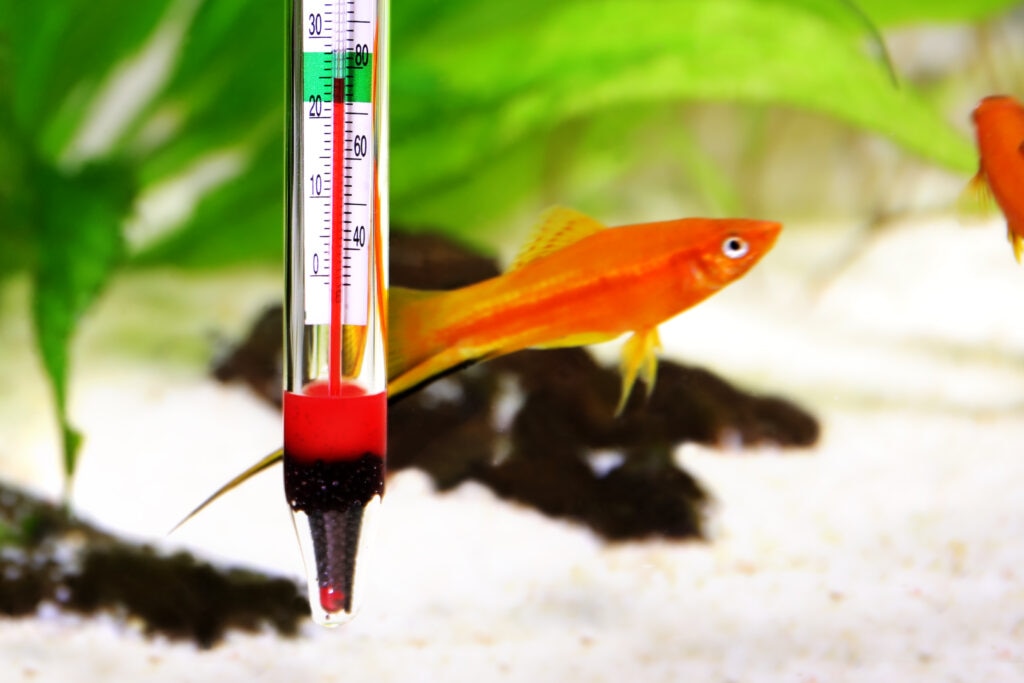
Photo by Mirko_Rosenau/iStock / Getty Images Plus via Getty Images
You aren’t the only one who struggles to keep cool during the summer—your fish do too.
If your home gets hot—whether your air conditioning is overwhelmed or you don’t have it—so does the water in your aquarium. Unfortunately, the higher water temperatures can lead to many issues, such as reduced oxygen levels and stressed fish. In addition to these emergency situations, there are some species of fish that prefer cooler temperatures, and some tanks that can overheat if they include a lot of equipment.
Fortunately, by watching out for a few clear signs and acting when you spot a problem, you can cool things down for your fish. Whether you’re new to aquariums or just trying to plan ahead, this guide covers what to look for and the best ways to keep your aquarium safe and stable.
Key Takeaways
- Use natural cooling methods like fans, live plants, and shaded areas to help keep the aquarium cool.
- Change the water regularly and strategically use ice packs to lower the water temperature without shocking fish.
- Consider the needs of the fish species you keep and maintain their temperature preferences to prevent stress.
What Are the Signs of an Overheated Aquarium?
“An aquarium suffering from a spike in temperature has several visible signs,” Matt Hayes of Fish Shop Matt explains. They include:
- Cloudy or murky water, which happens due to increased bacterial activity (this is also a sign that the tank is cycling or the biological filter was disturbed).
- Fish gravitating toward aeration devices or the water’s surface and gasping
Recommended Products
- Swimming erratically due to stress
- Loss of appetite due to increased water temperature
- Gasping for air or trying to gulp air near the surface of the water
Most importantly, watch the temperature. All tanks should have a thermometer that’s easily viewed.
Recommended Product
What Should an Aquarium’s Temperature Be?
While ideal temperatures vary by species, the key is knowing what’s best for your fish.
Hayes says, “Most tropical aquariums should sit in a temperature range between 75–80 F.” Many freshwater fish do well in 70–80 F water, but “with the thousands of fish available, it is always worth checking specific species and their temperature ranges.”
While mid to upper 70s are a good range for tropical freshwater fish, temperate fish like goldfish will be stressed above 75 F. Axolotls are even more heat-sensitive, and prefer temperatures below 70.
Todd Cecil, DVM, DABVP (Fish, Avian) explains that because most freshwater fish live in smaller bodies of water (lakes, ponds, and streams) that heat up and cool down in a wider temperature variance, they have a better ability to adapt.
However African cichlids from the rift lakes or Amazon river fish come from an environment with so much volume that temperatures do not fluctuate much.
On the other hand, the ocean’s size and temperature stability mean that saltwater fish rarely experience fluctuations of more than 2–3 F. Because of that, saltwater fish aren’t as adaptable and often exhibit heat stress sooner.
Risks of Overheated Fish Tanks
Cortisol, the body’s stress hormone, is great in small doses and helps a fish get out of danger. However, long-term stress increases the amount of cortisol in your fish’s system and affects the immune system, making them more likely to get sick or die.
In addition to the impact of stress, warmer water holds less oxygen. This is why fish will gasp near the surface when the temperature is too hot.
11 Practical Tips To Keep Your Aquarium Cooler
Cooling the water in your fish tank may require a multi-faceted approach that includes:
1. Keep the Room Cool
When you know the temperatures are heating up, close the blinds or curtains to reduce the amount of direct sunlight your aquarium receives.
Keep the room where your aquarium lives cooler—either with fans to increase circulation or air conditioning to maintain a cooler temperature.
2. Turn Off Unnecessary Equipment
All electrical equipment generates heat, some more than others. During the hottest parts of the day, turn off every nonessential piece of equipment, including lights if possible. Keep in mind that any equipment that creates surface water movement will help with cooling and oxygen exchange, so these should not be considered unnecessary.
One caveat is that plants and corals need to photosynthesize. If you have live plants or coral in your tank you’ll need to keep the lights on unless this is a short-term, heat-related emergency.
3. Use an Aquarium Fan To Increase Evaporation
Aquarium fans can be especially helpful. Placing a fan near the water’s surface increases evaporation, which helps cool the tank by carrying away excess heat—often lowering the temperature by a few degrees.
Recommended Product
4. Float Ice Packs or Frozen Water Bottles
Water bottles are readily available—just peel the label and freeze them. You can also try gel icepacks, but place them in a resealable bag in case one leaks. The contents can be toxic to fish.
However, don’t add too much ice in your tank. The temperature can drop too low, too quickly, says Dr. Cecil.
“With adequate circulation around your aquarium, the cooler water should be distributed,” says Hayes. And never turn your heater off because “if it does get too cold, the heater will kick in and bring the temperature back up.”
5. Install an Aquarium Chiller
Aquarium chillers, like the JBJ Aquarium Arctica Titanium Chiller, are the most effective way of keeping your aquarium cool, but they’re pricey. If your aquarium is full of lots of cool-water fish, sensitive species, or expensive corals, a chiller is the best option.
Recommended Product
Chillers come in various sizes to suit different aquariums and function much like a refrigerator. They need to be plumbed into your system and often need to be vented because of the heat they generate while working.
6. Improve Air Circulation Around the Tank
Increasing the air circulation around the tank will help dissipate heat and keep the temperature cooler. Move items away from the edges of your aquarium to give it more space.
If you can, open your aquarium’s lid and install a screen top to allow more heat to escape.
You can also experiment with different locations in your home—maybe it’s possible to place the tank next to an air conditioning vent or away from the wall.
7. Lower the Water Level Slightly
Try lowering the water level or adjusting the placement of your aerators. If you can create more agitation at the water’s surface, you’ll increase the oxygen exchange rate and lower the temperature through evaporative cooling
8. Adjust Feeding Schedule
A small but effective change is to adjust your feeding schedule. Fish often eat less during the hotter parts of the day and the food goes to waste, so pick a cooler time of day to feed them.
You can also reduce the amount of food for a few days while you’re getting the temperature under control. This helps minimize waste and keep water parameters more stable.
9. Perform Partial Water Changes with Cool Water
Evaporation from other cooling methods can be helpful —it gives you a chance to do a partial water change that helps lower the tank’s temperature. If you do this, try refrigerating the water for a little while—but don’t let it get cold enough to shock your fish. You don’t want the temperature to drop by more than a few degrees at once; this can lead to more stress-related health issues.
Add the water slowly, let it mix, and check the water temperature before adding more.
10. Monitor Tank Temperature Closely
When things start heating up during the summer months, keep a close watch over your fish tank. Use digital thermometers and thermostats to track fluctuations, and set alerts for when temps get too high.
Recommended Products
11. Create Shade with Plants and Decorations
Floating aquarium plants, like water lettuce or duckweed, can help, especially if your aquarium is near a window.
You can also move larger decorations and rocks to the side of the tank closest to the window, allowing your fish more shade and a chance to cool off.
Every aquarium setup is a little different, so it may take some time to figure out what works best. However, by paying attention and taking quick action when the water starts to warm up, you can keep your aquarium water healthy and safe for your pets.
